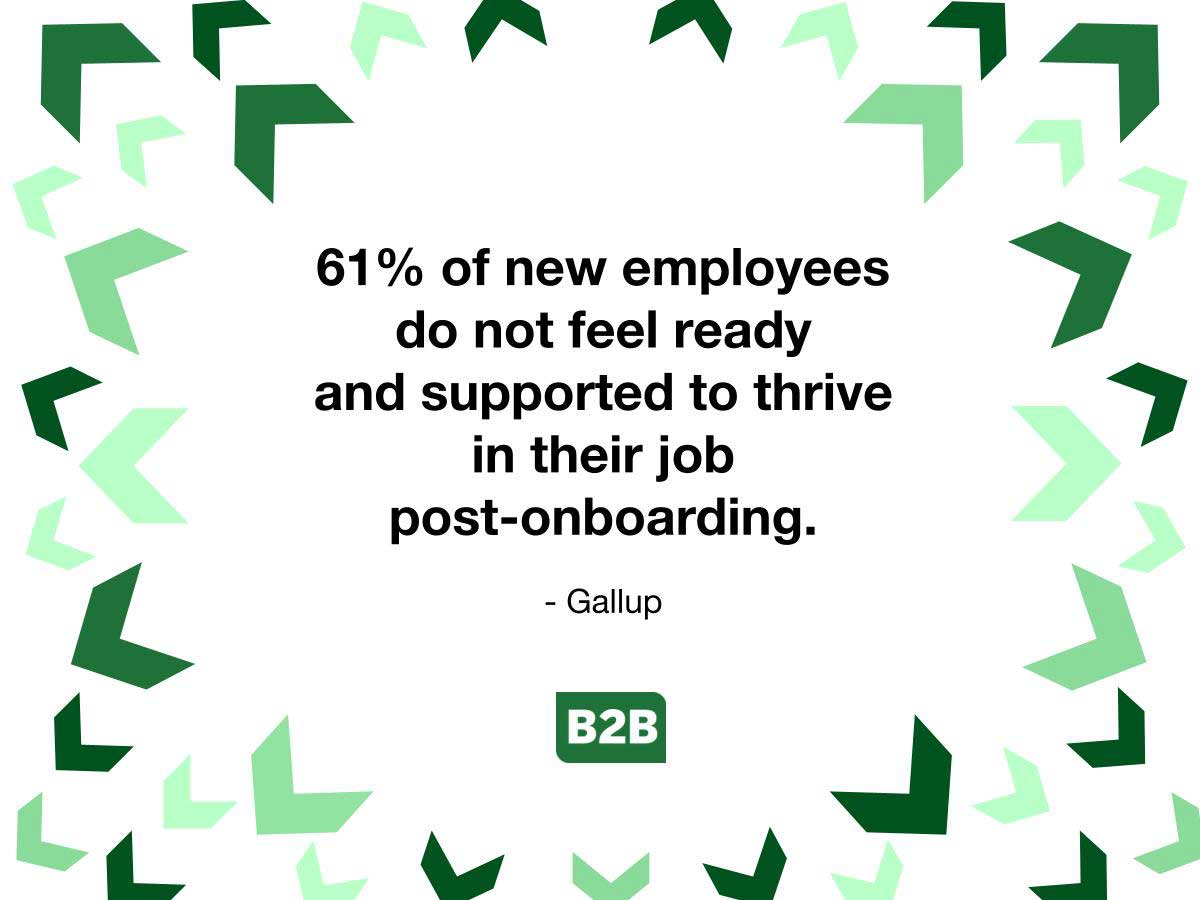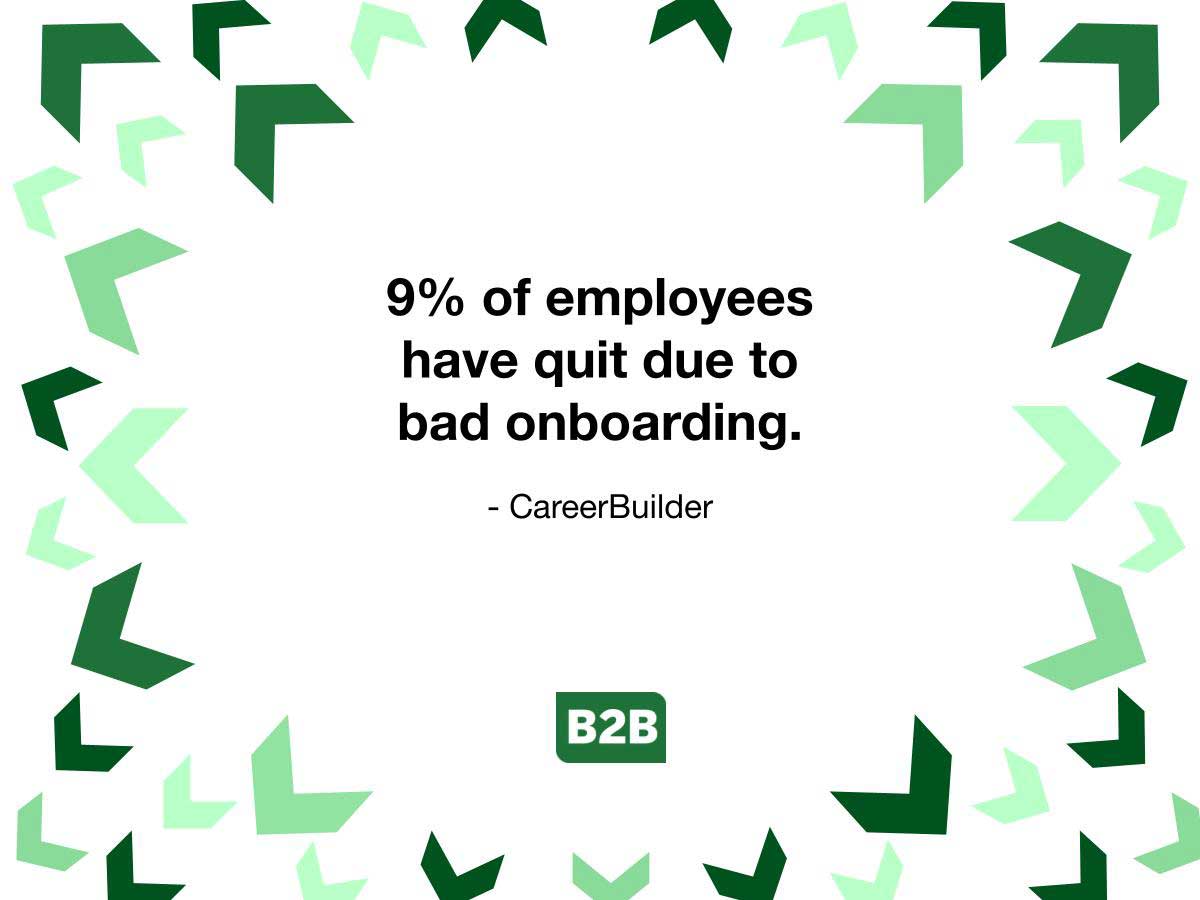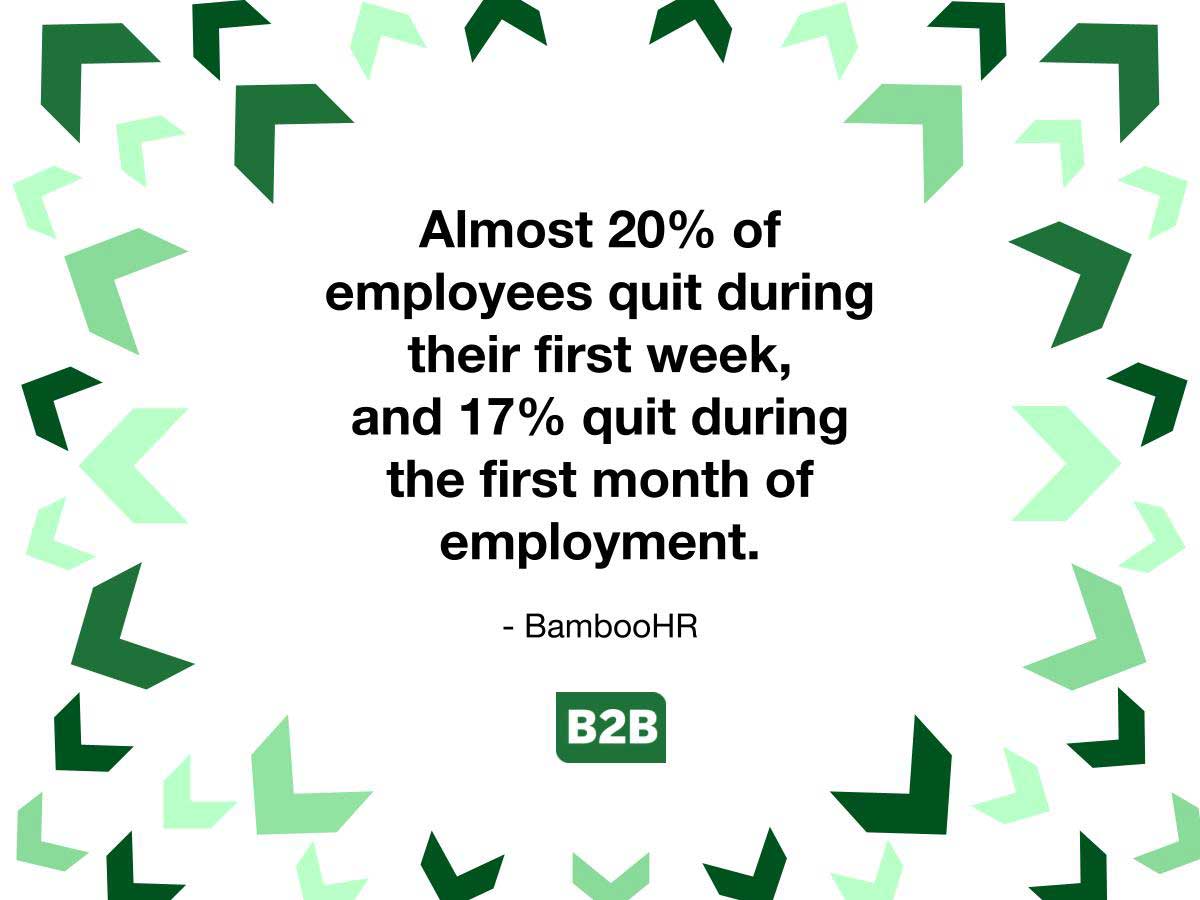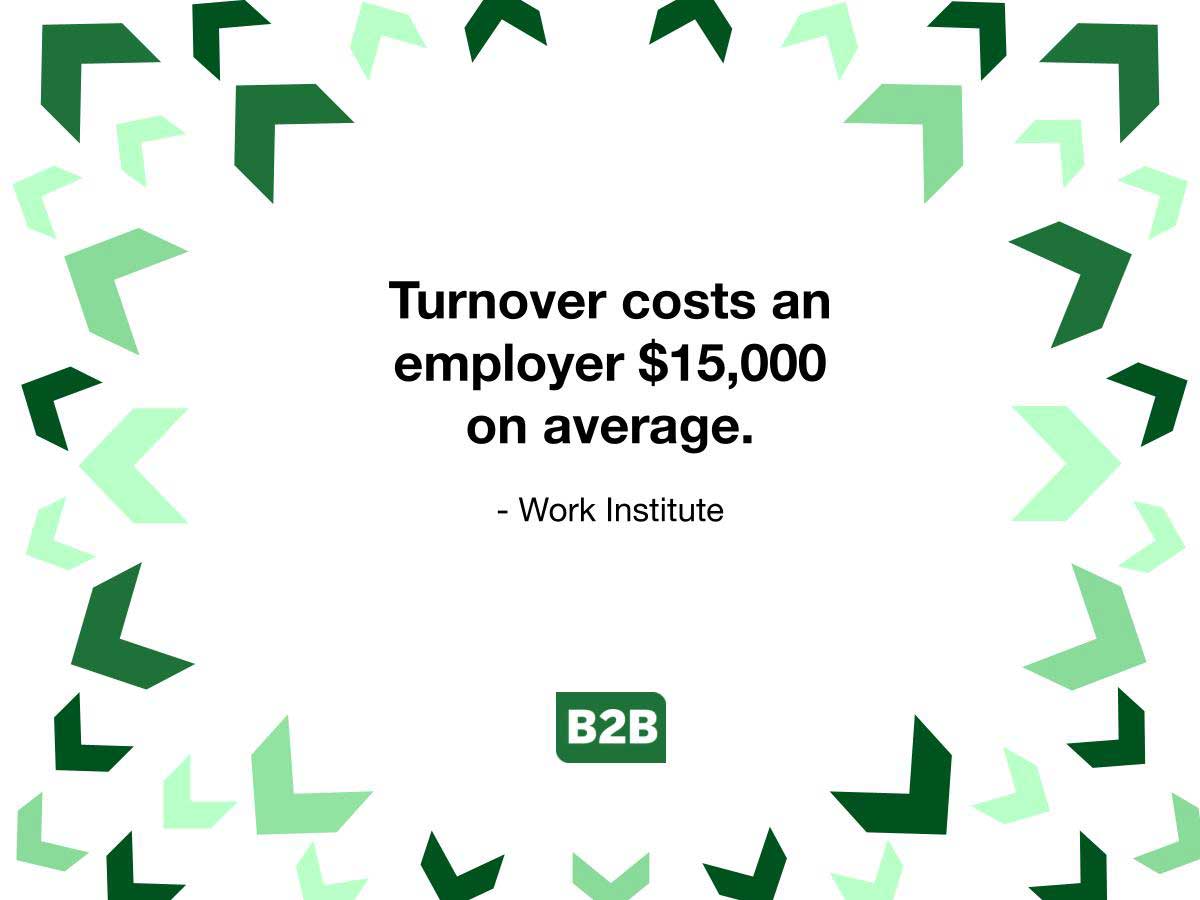We may earn money when you click on links to our partners. Advertiser Disclosure

Onboarding is the first behind-the-scenes view a new employee gets of your company and work environment. While there are many tools like onboarding software to help, the process of filling out paperwork and learning the ropes can be dreaded by many. Below are 81 statistics to help you rethink how you onboard new hires.
Onboarding Statistics
Onboarding isn’t just a time for signing documents and setting up computers. It also sets the tone for an employee’s work experience. But how important is it, really?
- Those whose onboarding experience is “exceptional” are 2.6 times as likely to be very happy with their company[1]
- Over 80% of workers who had a positive onboarding process continue to view their company well[2]
- Those who had a good onboarding experience are 3 times more likely to feel heavily committed to their employer[2]
- Hires who got a “highly effective” offer letter report feeling over 17 times more connected to their workplace[2]
- A subpar onboarding program decreases feelings of inclusion by 9%, while an “ideal” one increases it by 89%[3]
- Over half of employees believe that onboarding helped them more rapidly gain competence in their job[4]
- Almost 80% say that onboarding led to a fast adjustment to and positive view of their company[4]
- 83% of workers who did not have an onboarding program believe that onboarding would have been helpful[4]
Onboarding at most companies isn’t meeting the mark
- A mere 12% of employees believe their company is excellent at onboarding[1]
- 61% of new employees do not feel ready and supported to thrive in their job post-onboarding[1]
- New hires take a year on average to “reach their full potential”[1]
- Only 65% of employees report that onboarding helped them feel welcome in the company[5]
- 71% of workers said that they understood their role and felt prepared after onboarding[5]
- 22% of employees were not satisfied with their onboarding experience[5]
- 43% of employees took longer than a week to understand essential workplace functions[4]
- 55% of employees took longer than three months to understand a company’s values[4]
- 64% of workers had no pre-boarding[4]
- 40% of employees were left by themselves on their first day[4]
- 42% of employees didn’t receive support throughout their first week[4]
- 20% of new employees are not likely to recommend their company to others after onboarding[6]
- Almost 30% of employees say that their company did not prepare them enough for their first day[7]

The COVID-19 pandemic has uniquely impacted these issues
- 60% of employees who onboarded post-March 2020 understood what to expect on their first day of work. This is a 20% decrease from before the pandemic[8]
- Employees who onboarded during the pandemic report feeling less welcomed and less ready to do quality work[8]
- 41.5% of onboarding pre-pandemic had some remote component to it – during the pandemic, 63.6% of onboarding had a remote component[8]
- Contentment with onboarding was highest when it involved both online and offline elements, with discontent dropping to 15%[5]
Onboarding in a remote or hybrid format not only increases employee satisfaction but also saves companies time: E-signature software can save a 100-person firm up to 40 hours per month[2]. AI can also be a great tool: 9% of HR employees who have used ChatGPT say that they’ve used it for onboarding[9].
What happens during onboarding is essential for employee success
- After onboarding new managers with a structured plan, confidence in leading a team increased by 13%, and knowledge to lead increased by 29%[10]
- Giving employees symbolic awards during onboarding, the first month, and on traditional milestones increases revenue by 196%[3]
- These symbolic awards also increase inclusion by 419%[3]
- 70% of those who receive benefit training use them, while only 27% of those who don’t receive training use them[2]
Yet too often, onboarding is rushed, mundane, and missing critical information:
- Only 43% of employees had an onboarding experience greater than a day of paperwork and orientation[3]
- 58% of onboarding lasted a week or less, while a mere 15% lasted over a month[5]
- In another study, 52% of new hires spend 5 hours or less on onboarding[11]
- Onboarding is not considered “ongoing” in 95% of companies[4]
- In 2018, only 39% of employee onboarding included information on company culture[5]
- Only 19% of employees have had an onboarding experience that includes things such as catered food and time to socialize[3]

Who plays a role in onboarding matters too
- Over a third of new employees fear the process of adjusting to workplace culture and social norms more than they worry about paperwork or rules[11]
- 33% of employees want their manager to help onboard them[2]
- If managers play an active role, employees are 3.4 times more likely to believe their onboarding was “exceptional”[1]
- Only 20% of employees felt satisfied with their onboarding when they didn’t meet their manager on their first day[5]
- Less than half of companies include mentoring in their onboarding process[12]
- 56% of new employees believe that having an onboarding partner is one of the best ways to help them integrate[2]
- Employees at Microsoft with onboarding buddies report feeling 23% more satisfied with onboarding than those without[13]
- 97% of those who met with their buddies eight times during the first 90 days say their buddy helped their productivity[13]
- However, 49% of workers believe that making friends, rather than having an assigned “buddy,” is the best way to integrate into a job[11]
- 38% of workers say that being in a group of other recent hires helps them feel the most welcome[11]
- 31% of employees would rather have onboarding groups and meetings instead of a happy hour[11]
Employee retention statistics
Onboarding has a big impact on employee retention.
- 93% of employers believe that good onboarding plays an essential role in retaining an employee[7]
- 53% of HR professionals want onboarding to help retain employees[4]
- 9% of employees have quit due to bad onboarding[7]
- Those who did not have a positive onboarding experience are two times more likely to search for new jobs in the near future[6]

Employee engagement and performance statistics
Employee morale and onboarding efficacy are directly linked:
- Only 23% of workers say they are engaged at work[14]
- An “ideal” onboarding program increases great work by 114% and engagement by 135% [3]
- 89% of workers whose onboarding experience was effective feel engaged at their job[15]
- In fact, companies that provide strong onboarding processes improve new hire productivity by 70%[26]
- Almost 20% of employees quit during their first week, and 17% quit during the first month of employment[2]
- 51% of employees who leave do so during the first six months of their job[12]
- Of those who quit, 23% wanted better explanations about their role, and 21% expected better training[2]
- 17% of employees who left believe that a friendlier workplace could have made them stay[2]
- In another study, 66% of the reasons why employees quit were problems with engagement, culture, well-being, and work-life balance[16]
- Companies with lackluster DEI programs are 32% more likely to see increasing rates of quitting[17]
- In a survey of candidates who recently accepted a job, only 59% said they would take it again[18]
Leaders, HR, and employees are not on the same page
- 36% of employees report feeling engaged at work, yet 95% of HR leaders believe that workers are at least somewhat engaged[19]
- 40% of new employees do not believe that their company’s branding correlates with their experience after joining[20]
- Only 28% of workers would recommend their employer[16]
Employee well-being is essential to the running of a business
- 63% of employees who say that they are “suffering” at work are seeking out new jobs, while only half of employees overall are doing so[21]
- Employees who feel fulfilled at work are 297% more likely to recommend their workplace to others[3]
- Those who are highly fulfilled will stay at their jobs three years longer than unfulfilled employees[3]
- When employees feel a strong sense of belonging in their workplace, their desire to work in the same job in a year goes up by 252%[3]
- Moreover, this sense of connection increases the chances that employees do great work by 236%[3]
- When employees feel a strong sense of purpose at work, their desire to work there in a year increases by 254%[3]
- A strong sense of purpose at work also raises the chances of great work by 373%[3]

The financial impact of onboarding
These are all problems in which onboarding plays an essential role. Onboarding defines an employee’s critical early days, but it also should teach them company values, define their job, and help create connections. Indeed, 52% of employees who quit believe their company could have done something to prevent them from leaving[22]. Moreover, 69% of turnover was due to reasons deemed “more preventable”[23]. And replacing lost employees is not cheap:
- Hiring an employee can cost, on average, $4,700, though some higher-level jobs can get up to $28,000[24]
- Sometimes total hiring costs can be as high as 3-4x that position’s salary[25]
- Turnover costs an employer $15,000 on average[23]
- In 2021, turnover cost employers $700 billion[23]
- It takes 36 days on average to replace a worker[2]

The Bottom Line
The data clearly shows onboarding is more essential than ever. The good news is: onboarding problems are fixable. Creating engaging programming that helps integrate new hires into the company culture can leave a good first impression. Pre-boarding and expediting tasks through robust HR software will reduce the tedium of the process. Ultimately, an early investment in your employees can save your business time and money in the long run.
- Gallup, 2019. “Creating an Exceptional Onboarding Journey for New Employees”
- BambooHR, 2023. “How to Make Employee Onboarding a Top Priority in 2023”
- O.C. Tanner, 2023. “2023 Global Culture Report”
- Talmundo, 2019. “Expectations VS Reality of Onboarding”
- TalentLMS, 2019. “Satisfaction with Onboarding: What New Hires Want”
- Digitate, 2018. “Super CIO eBook”
- CareerBuilder, 2018. “State of Recruiting and Onboarding Report”
- Perceptyx, 2021. “Failure to Attach: The Crisis for Pandemic Hires”
- B2B Reviews, 2023. “HR Issues Tech Edition”
- USF, 2021. “Manager Onboarding to Improve Retention, Knowledge, and Confidence to Lead”
- HiBob, 2019. “The State of Employee Onboarding Research Report”
- NovoEd, 2021. “Virtual Onboarding with a Human Touch”
- Harvard Business Review, 2019. “Every New Employee Needs an Onboarding ‘Buddy'”
- Gallup, 2023. “State of the Global Workplace: 2023 Report”
- BambooHR, 2023. “These 10+ Onboarding Statistics Reveal What New Employees Really Want in 2023”
- Gallup, 2023. “Employee Retention & Attraction”
- SHRM, 2022. “SHRM State of the Workplace Report 2021-2022”
- Gartner, 2022. “Gartner HR Research Finds 59% Of Candidates Who Recently Accepted a Job Offer Would Make the Same Choice, Down From 83% in 2021”
- Leapsome, 2023. “Leapsome’s 2023 State of People Enablement Report”
- Human Resource Executive, 2021. “How virtual onboarding is failing employees”
- Gallup, 2023. “From Appreciation to Equity: How Recognition Reinforces DEI in the Workplace”
- Gallup, 2019. “This Fixable Problem Costs U.S. Businesses $1 Trillion”
- Work Institute, 2022. “2022 Retention Report”
- BambooHR, 2023. “From Recruitment to Onboarding, What’s the True Cost of Hiring Employees?”
- SHRM, 2022. “The Real Costs of Recruitment”
- Zippia, 2023. “17 Incredible Onboarding Statistics [2023]: HR Trends in Hiring, Training, and Retention”